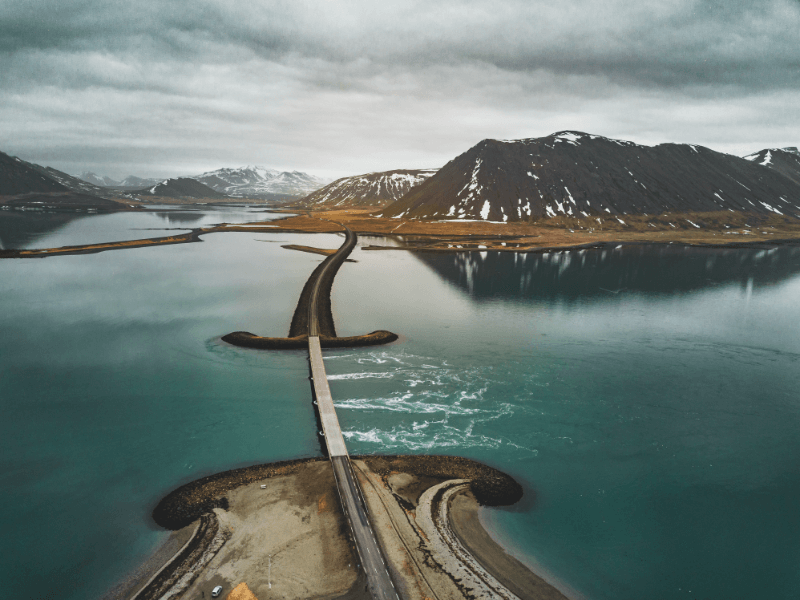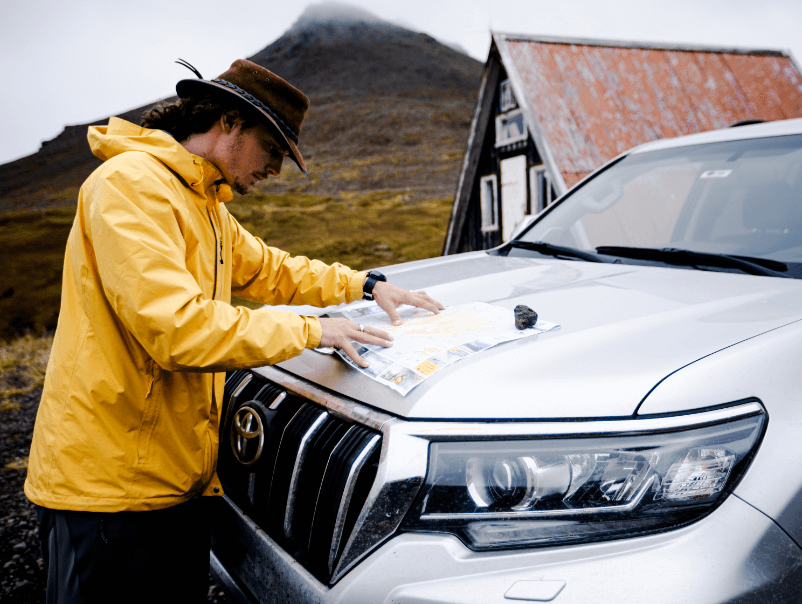The Land of Fire and Ice really stays true to its name when we dive into everything that is this striking volcano. Eyjafjallajökull is a powerful force of nature that not only shakes the earth but also twists your tongue.
With the fire bubbling underneath the glacier, Eyjafjallajökull has the power to get its friends to join a hot party and disrupt an entire continent. Read on to find out just which secrets this gentle giant rumbles on about.
What is Eyjafjallajökull?
The magnificent Island of Fire and Ice is set upon the Mid-Atlantic Ridge, right on the border of the Eurasian and North American tectonic plates. These plates are (unfortunately for the Icelanders) slowly moving away from each other, which means there is a literal line going through the country that is periodically cracking a little bit, creating earthquakes, and opening up for volcanos. Eyjafjallajökull is a volcanic system created by this type of movement.
Luckily for the Icelandic people, the tectonic movement often means that most of the volcanoes that erupt on the island are not of the explosive kind. Instead, they tend to be of a slower nature with rumbles and fissures that might start with some drama but quickly transition to a stream of lava coming through the cracks and running along the landscape for an extended period of time. This allows people to take their time in evacuation and is calm enough for people to watch the eruption from afar safely.
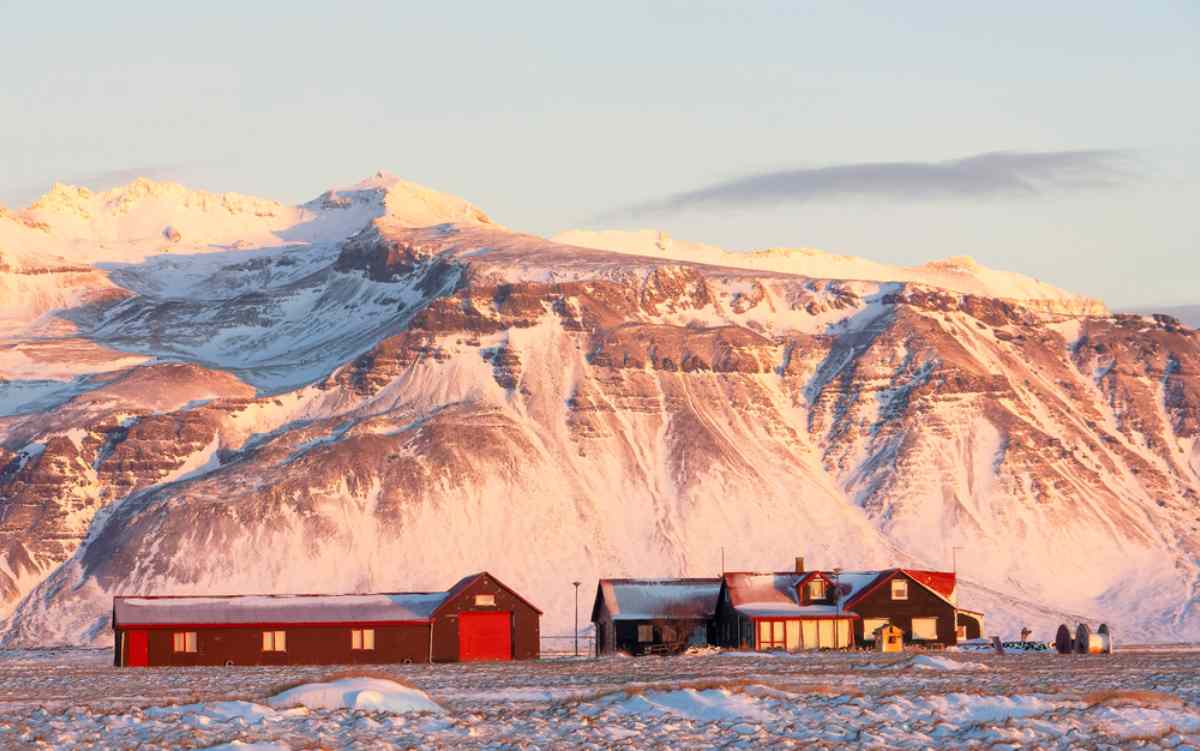
Is Eyjafjallajökull Under a Glacier?
When talking about the Iceland volcano Eyjafjallajökull, it is important to remember that it is a volcano under a mountain under a glacier, all with the same name. The details lie in the name as “Eyja” means “islands”, “fjall” means “mountain” and “jökull” means “glacier”. If you break down the name, you get “Eyja-fjalla-jökull”, which translates to “the mountain of the islands”, or, more directly, “islands’-mountains’-glacier”.
This complex name is hard to pronounce for non-Icelanders and has given rise to a popular search on the internet that often goes along the lines of “What is the name of the mountain in Iceland that no one can pronounce?” This also means that it is OK (for visitors) to completely butcher the pronunciation of the volcano.
What Type of Volcano is Eyjafjallajökull?
Eyjafjallajökull is something called a stratovolcano, which is made up of multiple layers of hardened lava and debris. This layered structure allows the volcano to hold incredible pressure underneath the surface, keeping it from erupting for long periods. This is the most common type of volcano in Iceland (and in the world) and can erupt in different ways: through a fissure or an (often explosive) summit eruption.
A stratovolcano is often a large mountain-like volcano with a crater on top and is usually what we picture in our minds when we hear the word “volcano”. In the case of Eyjafjallajökull, the mountain part of the volcano is over 1.6 kilometers high and has a crater that’s 3-4 kilometers in diameter. The crater has three main peaks that are 1,500 meters, 1,497 meters, and 1,651 meters high.
How Does Eyjafjallajökull Erupt?
In typical Icelandic stratovolcano fashion, the Iceland volcano Eyjafjallajökull will do everything from long fissure cracks to explosive summit eruptions. For Eyjafjallajökull, the lava itself is often not as big of an issue as the rest of the eruption. Since the lava from this type of volcano usually has a high viscosity, which means that it moves slowly and hardens quickly, it often means that the risks involved in the eruption are more connected to earthquakes, mudflows, and volcanic ash.
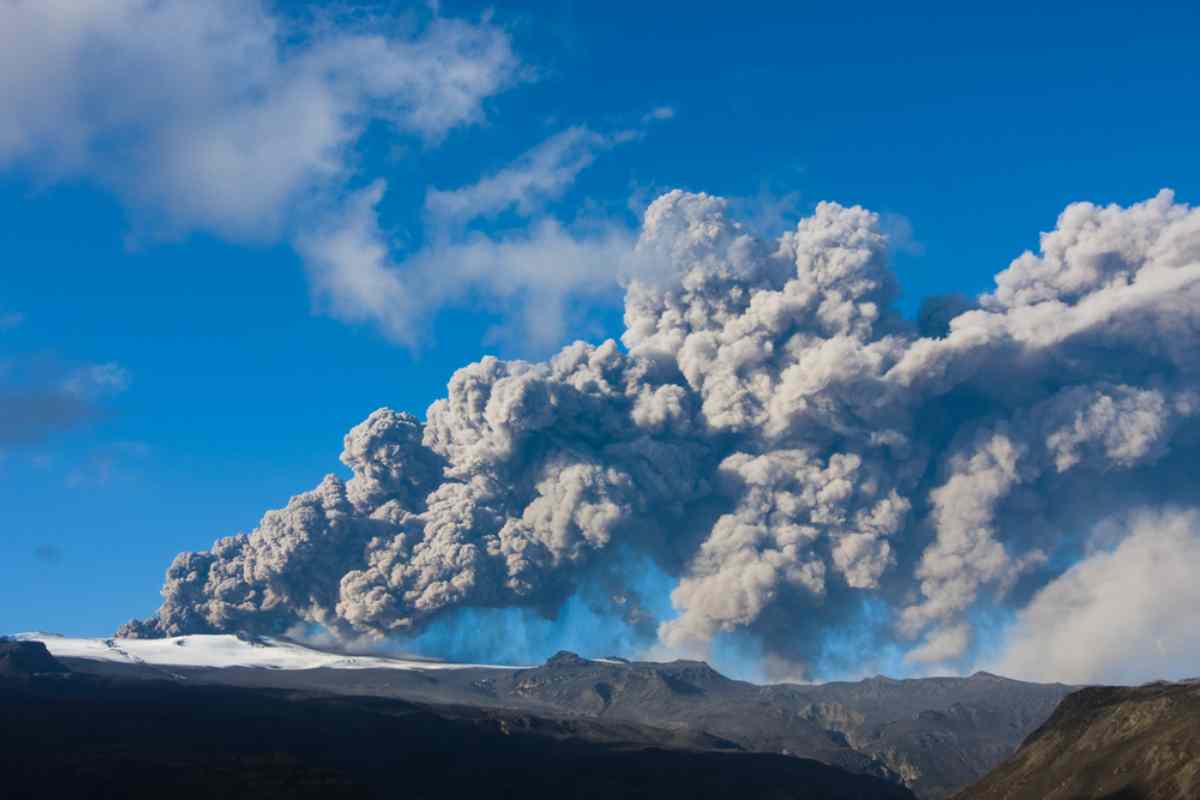
The main concerns for an eruption from Eyjafjallajökull are the same as with all volcanoes close to ice: it quickly melts the ice, creating a glacial flood and explosive steam columns that carry ash and other harmful compounds into the atmosphere. This cloud of harmful compounds can be carried for very long distances with the wind, making them unpredictable and dangerous for people who live very far from the eruption.
Where is Eyjafjallajökull?
You’ll find the majestic Eyjafjallajökull volcano on the southern part of the island, about 5 kilometers from the coastline. A fun fact about the volcano is that the southern part of Eyjafjallajökull used to be the southern coast of Iceland, but due to the land rising after the latest Ice Age, the coastline has now retreated a couple of kilometers and will continue to do so.
If you are taking a trip along the south coast of Iceland, you will reach Eyjafjallajökull, about 110 kilometers southwest of Reykjavík. You will get to the small town of Hvolsvöllur (which acts as a base for Eyjafjallajökull information and expeditions) by driving Ring Road 1 east from the capital.
Is it Close to Other Volcanoes?
On the surface, Eyjafjallajökull is located in the south of Iceland. The 2.5-kilometer-thick glacier covering Eyjafjallajökull is about 80 square kilometers large and very close to its cousin – Mýrdalsjökull. Mýrdalsjökull is much larger and sits on top of the restless Katla Volcano.
Deep underneath, it is connected to multiple volcanoes and the entire East Volcanic Zone in Iceland. This zone is connected to far more concerning volcanoes like Katla and Hekla, which have been active for the last few thousand years and might cause some serious concerns if they erupt. This zone also connects to the Reykjanes Peninsula, which has some active volcanos at the moment.
Hekla has had multiple eruptions since people started settling down in Iceland. For a while, it was known as the “gateway to hell” all across Europe, which was a name given by monks after the 1104 eruption.
Katla is slightly less active than Hekla but is a bigger concern due to how it is structured. The glacier on top of Katla is incredibly thick, making the volcano prone to massive mudslides and immense amounts of ash when it erupts. Both usually cause significant damage to the surrounding area, and large amounts of ash can travel incredibly long distances, causing damage in Europe and North America. Katla usually erupts every 50 years, but since an eruption hasn’t broken through the ice since 2018, there is a certain nervosity surrounding this volcano.
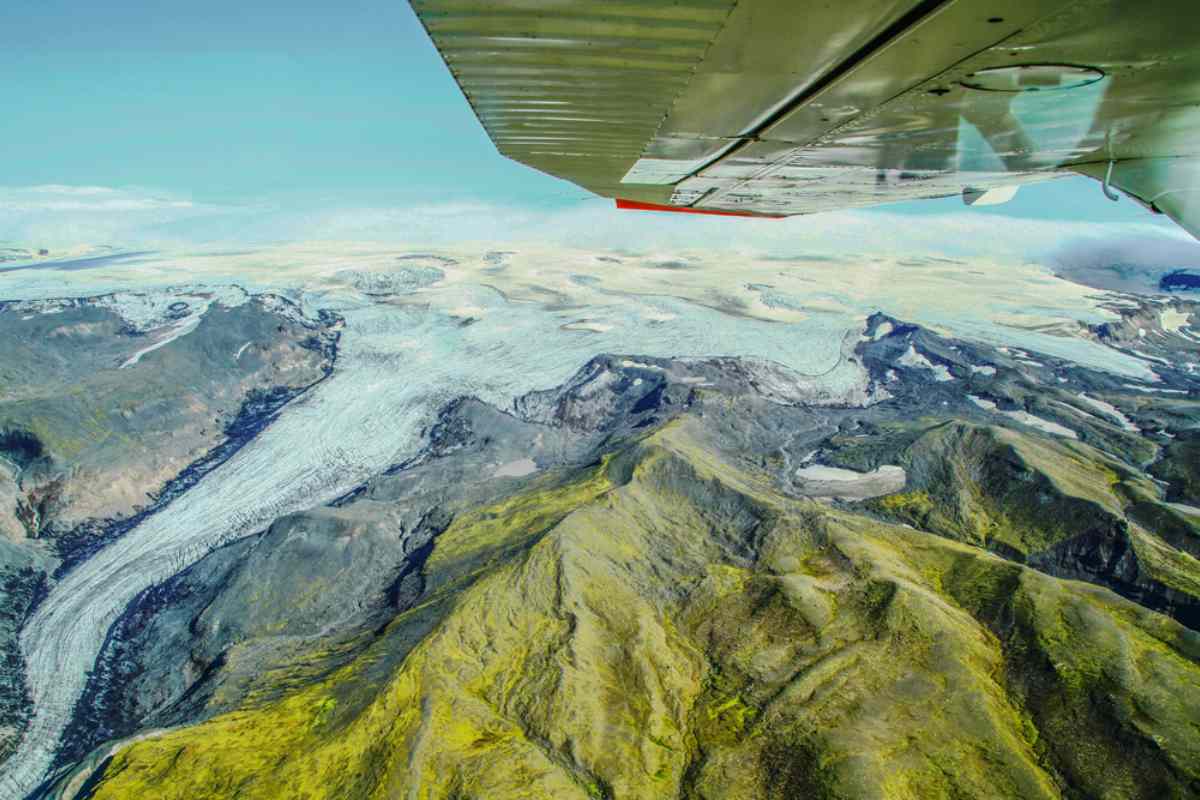
The Intricate History of Eyjafjallajökull
Around 800,000 years ago, a small volcano in the North Atlantic Ocean decided to make an entrance and help create an island that would eventually be called Iceland. Eyjafjallajökull is one of Iceland’s most famous volcanoes, yet it hasn’t been very active since the settlement of the island. This volcano has been sitting quietly, not making much noise, while having an interesting connection to its surroundings.
Whenever Eyjafjallajökull has had an eruption of some sort, there has always been an eruption from Katla shortly thereafter. This is partly why everyone is a little bit nervous around Katla – an eruption is long overdue and never occurred after the latest eruption of Eyjafjallajökull. Luckily, since the latest eruption from Eyjafjallajökull, the volcano is quite stable as of now. Therefore, the worry surrounding an eruption from Katla is not as serious as it could be.
Eyjafjallajökull’s Past Eruptions
There have been four major eruptions from Eyjafjallajökull since Iceland got settled in the late 800s, and the volcano has only been moderately active in the last 8,000 years. This means that even though the neighboring volcanos have been living it up, Eyjafjallajökull has been relatively calm in comparison.
The recorded Eyjafjallajökull eruptions were in 920, 1612, and 1821. There isn’t much information about the first two eruptions other than that the first one was basically a crack in the ground with lava leaking out, and the second one was a small summit eruption with no substantial impact (probably due to the lack of settlements). Neither of them was particularly dramatic (compared to the usually explosive nature of a stratovolcano), but the third one lasted a whopping 14 months between 1821 and 1823.
The long eruption of 1821 had an initial summit eruption with subsequent explosive eruptions continuously for 14 months. Even though this might sound like a lot, the only serious eruptions took place in the first couple of days. The rest didn’t impact the surrounding area much, and people could get on with their lives without any profound impact.
The effect of the Eyjafjallajökull eruptions of this period is mostly attributed to the fluoride poisoning the nearby farms suffered in the coming years because of the high fluoride contents of the ash and gases. This was only discovered a couple of hundred years later when the technology to detect these poisonings was applied.

The latest recorded eruption from the Eyjafjallajökull volcano took place in 2010 and came after almost 3,000 small earthquakes were recorded at the epicenter of the volcano, roughly 7 kilometers underground. The first eruption was not as dramatic as expected, but the second eruption gave the volcano worldwide attention. The second eruption occurred under the Eyjafjallajökull glacier, resulting in incredible amounts of ash being flung into the atmosphere and causing electrical storms around the volcano.
The Eruption of 2010: Eyjafjallajökull in the Global Limelight
If the volcano hasn’t been very active for the last couple of hundred years, what is Eyjafjallajökull famous for? The eruption in 2010 was so severe that it grounded air flights in the entire Northern Hemisphere for a couple of days due to the massive amounts of volcanic ash in the atmosphere. It is estimated that this affected as much as 10 million air travelers during this short period.
Another reason for the volcano’s fame is because of its name. With all the global news coverage, people from all over the world tried to pronounce Eyjafjallajökull live on TV, which led to many laughs, hopeless sighs, and many congratulatory moments whenever anyone got the name right. Some challenges were flung around in social media and the humor around saying Eyjafjallajökull almost overshadowed the ash clouds’ impact on the world.
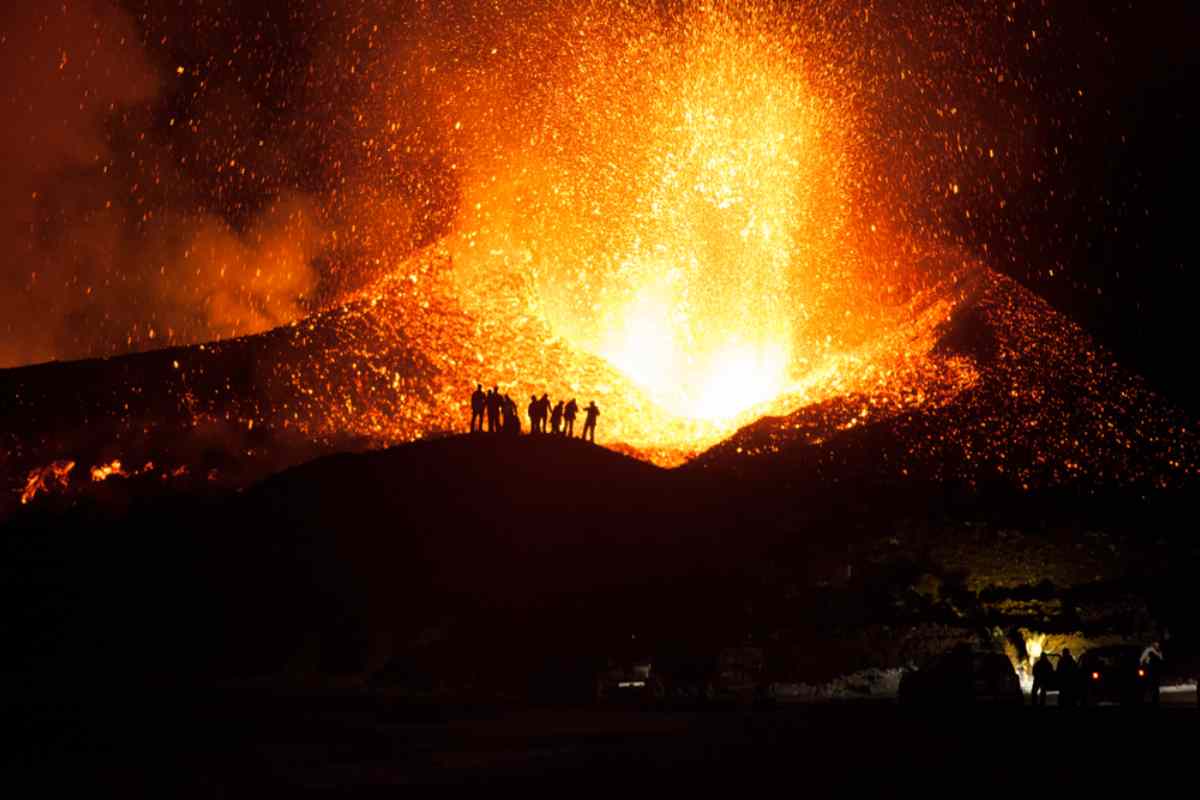
Can I Visit Eyjafjallajökull?
Yes! Much time has passed since the last eruption, and Eyjafjallajökull is now considered to be safe, not only to visit but also to hike. Even if Katla and Hekla might be a little restless, this quiet volcano is resting easy at the moment and there are multiple hiking tours you can take to get a chance to physically stand on top of this quiet volcano. If you’re worried, you can always check out the volcano section of the Icelandic Meteorological Office for more information.
Other Things to Do & See Near Eyjafjallajökull
In the vicinity, you’ll find the famous Skógafoss waterfall, which is well known for its incredible scenery and size. It is one of Iceland’s largest waterfalls and makes for an excellent stop around the island if you want to take stunning pictures. Just remember to bring something to dry yourself off with afterward, as this waterfall’s sheer size and power will drench everything that comes close.
If you are into hiking and scenic nature (as one would be when visiting Iceland), then the Thorsmork hike is perfect for you. Situated at the northern foot of the Eyjafjallajökull Mountain, this might be an excellent part of your adventure in the area. We strongly suggest taking a good time exploring this area, as it is renowned for its beauty and should not be rushed through.
For more information about Eyjafjallajökull, you should check out the town of Hvolsvöllur, as it is literally built to service the surrounding area. It is an excellent starting point for any day trip and boasts all the necessary amenities.
Eyjafjallajökull Volcano: The Safest Bad Boy on the Ring Road
Eyjafjallajökull might’ve been a real troublemaker for Iceland and the rest of Europe during its 2010 eruption. Still, today, this volcano is safe and stable and has a lot of cool things happening around it. Since it’s conveniently located near the Ring Road, we suggest you rent a campervan in Iceland and take a Ring Road road trip to properly explore this bad boy and the surrounding area on your own terms.


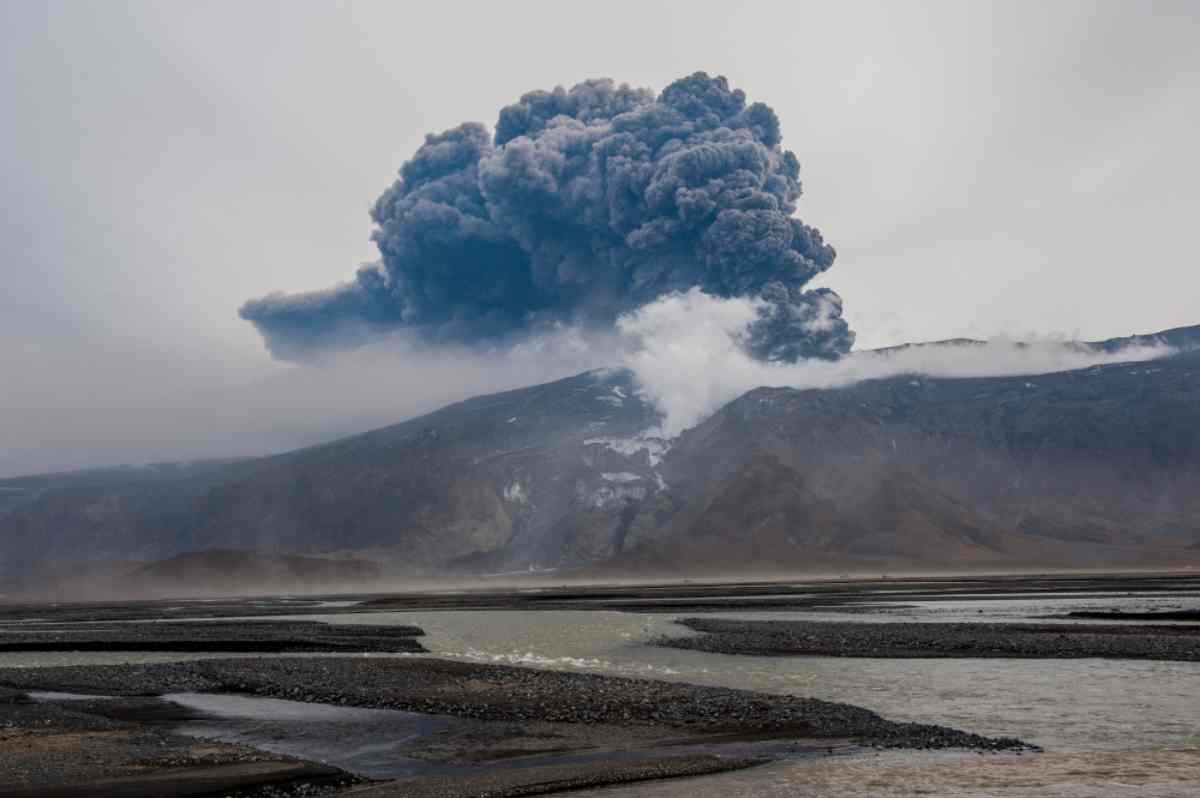
 By
By 





